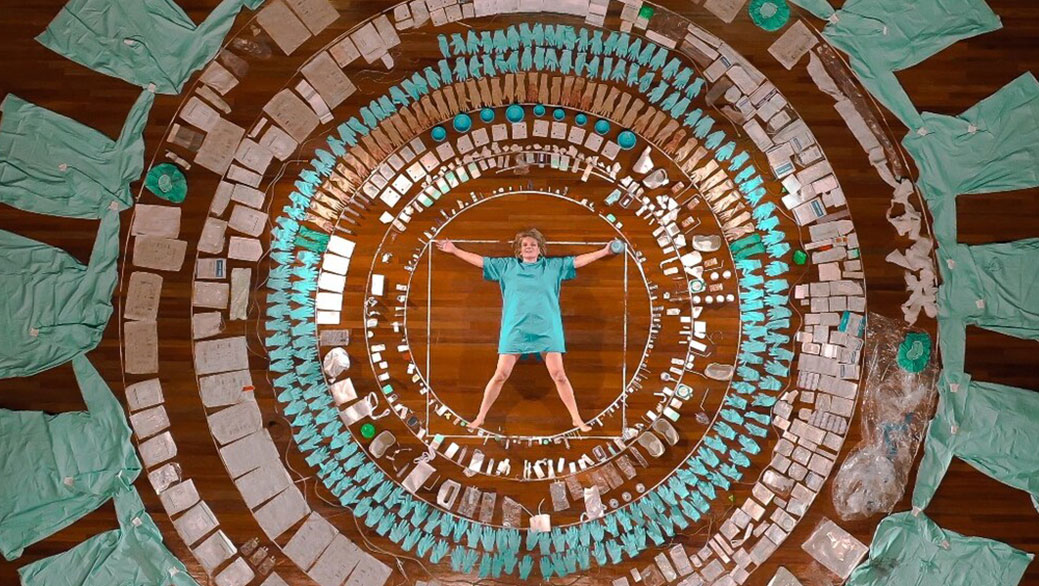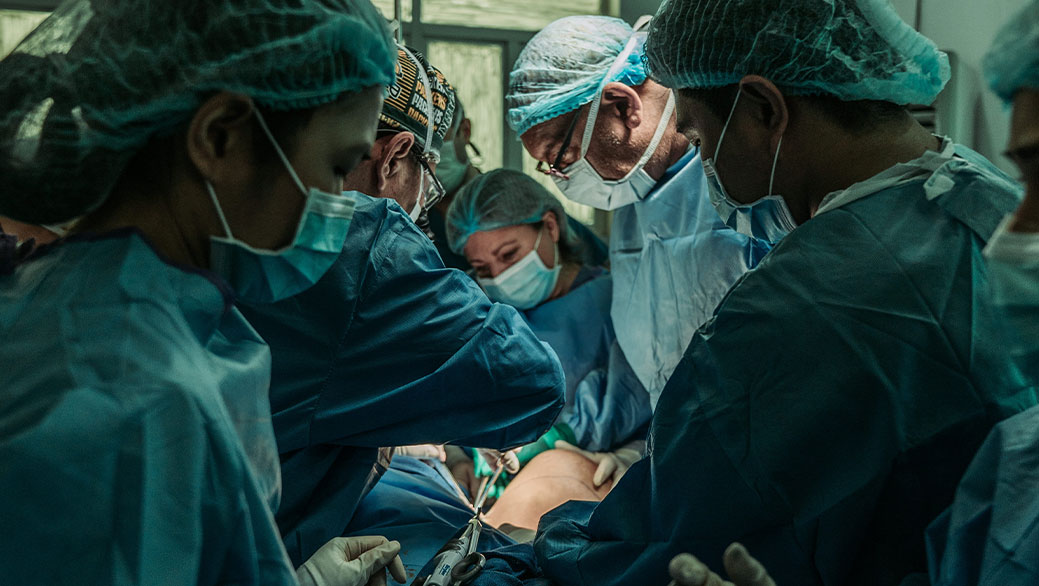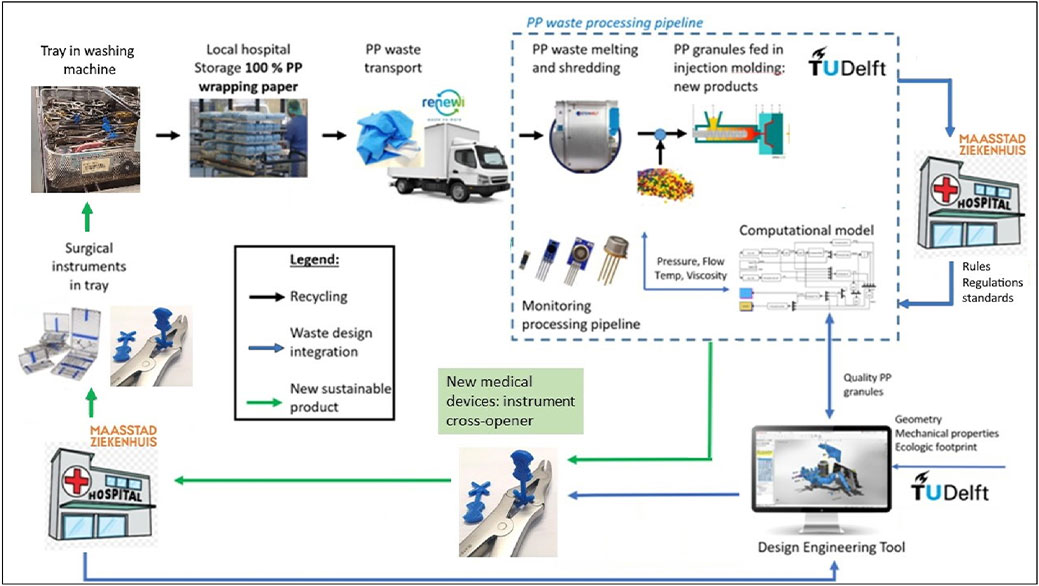Decarbonizing Healthcare
Almost 5% of global carbon dioxide emissions are contributed by the healthcare sector. If the healthcare sector were a country, it would be the fifth largest emitter. Healthcare produces greenhouse gases both directly (electricity and gas) and indirectly through emissions associated with the consumption of goods and services.
RECENT DEVELOPMENTS
Although necessary for sustaining and improving human wellbeing, healthcare services have yet an important environmental footprint that contributes to environment-related threats to human health.
And while health care evaluation has traditionally focused on direct health outcomes and financial costs, the environmental footprint of health care (which includes a wide range of air, water and soil pollutants) also has an unintended and negative impact on health.
It is only in recent years that the scientific community, social and political movements, as well as health care personnel themselves have begun to express interest in the environmental impact of health care systems.
Filled with machinery, computers and lighting that run 24 hours a day, the healthcare infrastructure consumes more than twice as much energy as other commercial buildings.
In operating rooms, ventilation systems can exchange air up to 20 times per hour or more, even when empty. Propellant gases from an inhaler or anesthetic are greenhouse gases. Nitrous oxide, or „laughing gas,“ has 300 times the warming potential of carbon dioxide. And the main ingredient in an inhaler is a hydrofluorocarbon, a class of potent greenhouse gases used in air conditioners and refrigerators.
In the name of hygiene, health services rely heavily on single-use items, many of them plastic. Produced and shipped hundreds of miles away, their shelf life is at best reduced to a couple of hours. Thus, the care of one patient in a hospital can generate up to 43 pounds of waste per day.
However, the largest source of carbon consumption, about 70%, comes from the supply chain and the energy required to manufacture, ship and dispose of the pharmaceuticals, food, medical equipment and plastic packaging that hospitals use every day.
IMPLICATIONS FOR THE HEALTH INDUSTRY
In the face of the worsening climate emergency, it is the responsibility of healthcare services not only to care for the sick or injured and their causes. Their responsibility must be extended to the provision of preventive healthcare actions, as well as radically reducing their own emissions.
The definition of climate policies and practices aligned to the ambitions of the Paris Agreement will require the facilities, systems, control and political bodies associated with the healthcare sector to work hand in hand with manufacturers and suppliers of healthcare goods and services to achieve net zero emissions by 2050 or sooner.
Although thousands of hospitals and healthcare systems around the world have taken action to reduce their environmental impact, the work to be done is still vast. A recent report by No-Harm Europe and Arup suggests concrete implementation actions to reduce environmental impact. These actions could include the use of appropriate low-carbon technology; design and construction of low-carbon or net-emission buildings zero emissions in building design and construction; investment in renewable energy and energy efficiency climate-smart cooling technologies; sustainable management of waste, water, and transportation; and minimizing the use of use of anesthetic gases with high global warming potential; among others.
Similarly, decentralized models of healthcare that take advantage of decentralized models of healthcare that take advantage of telemedicine and other new technologies can also help reduce the climate footprint of healthcare. Prevention, rather than treatment of disease, helps reduce the need for carbon- and facility-intensive treatments.
The role of plastics:
Just as other elements within the healthcare value chain are under review, a paradigm shift is currently taking place in the plastics healthcare landscape. Linear models of resource consumption, i.e., „make-use-dispose,“ are being challenged in favor of more circular and sustainable approaches. The healthcare sector is adopting a life-cycle approach to plastics waste management, which aims to recover, reuse and recycle plastic products and packaging as part of the circular economy.
Just as other elements within the healthcare value chain are under review, the intensive use of plastics and mainly single-use products within the sector is being questioned. Linear models of resource consumption, i.e., „make-use-dispose,“ are being set aside in favor of more circular approaches.
The purchasing power of the European healthcare sector can influence the market and policies and encourage the production and consumption of more sustainable and reusable products. This position, and the initiatives resulting from it, opens up a landscape of both uncertainty and opportunity for Greiner, who for decades has been supplying the diagnostics industry with products of high-quality standards. Despite their quality, these products are manufactured from plastic and their lifespan is limited to a single use.
MICROTRENDS
Humans always seek to ‘get better’, but what is the cost to our environment?
Maria Koijck is a Dutch plastic artist who in 2019 was diagnosed with breast cancer. After a first surgery to remove her breast, Maria returned to the operating room to have a reconstruction surgery. At the latter she asked the medical staff to collect all the garbage and waste materials that arose from the operation. Her surprise was unexpected when she received 6 bags full of waste, and even more so when she discovered that 60% of the surgical materials used in the operation were disposable. For example, the stainless-steel scissors brought from Japan are used for only one cut, after which they end up in the trash. With these materials, Maria made and published an online video that went viral, which has prompted a mindset shift and has encouraged some actors within the healthcare sector to devise solutions.

How can we move towards an environmentally sustainable hospital?
This is the question around which the sustainable hospital laboratory of the LDE Center for Sustainability is structured. The Leiden-Delft-Erasmus Center for Sustainability is an interdisciplinary research center involving Leiden University, TU Delft and Erasmus University Rotterdam. The aim of the center is to accelerate the transition to the circular economy.
The LDE center in partnership with Medical Delta joins forces in its aim to make the healthcare sector more sustainable. This partnership has brought together students from various disciplines to work within the framework of their master’s theses on specific challenges faced by healthcare providers today.
Part of the challenges to be worked on and/or evaluated until July 2022 are for example: the use of single-use vs. multiple-use surgical instruments; transforming hospital waste to new medical equipment or, the environmental footprint of interventional radiology.

Recycling of hospital waste for new medical devices
Each year, hospitals in the Netherlands generate about 1.3 million kilograms of plastic waste from polypropylene wrapping paper on surgical instruments. Researchers have suggested that this waste could be turned into new medical devices. They recovered surgical wrapping paper from the operating theatre at a hospital in Rotterdam, the Netherlands. The waste was melted into solid blocks, granulated and injection moulded into new medical products.
The study shows that it is feasible to recycle hospital polypropylene wrapping waste into high-quality raw material for injection moulding of new medical devices.

SOURCES
INFORMATION
How hospitals fuel climate change
Health care’s climate footprint. How the health sector contributes to the global climate crisis and opportunities for action. Health Care Without Harm Climate-smart health care series. Green Paper Number One. Produced in collaboration with Arup, September 2019
Healthcare plastics recycling council.
PICTURES
Main Picture: greenhospitals.net
Microtrend 1: youtube.com
Microtrend 2: Unsplash
Microtrend 3: sciencedirect.com

